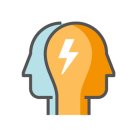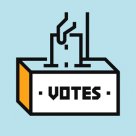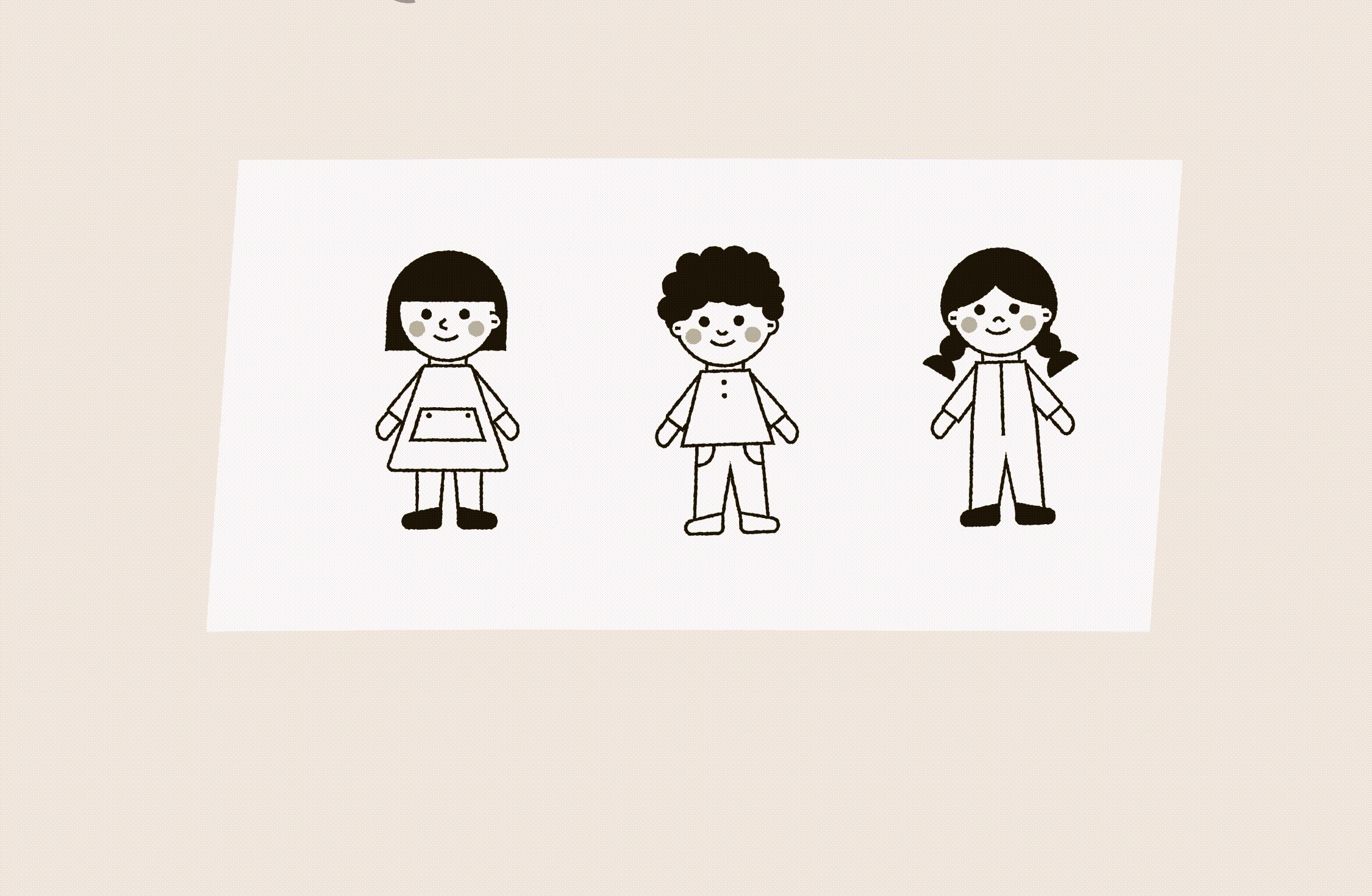Key Takeaways
- Providing a high-quality education for children before they turn five yields significant medium- and long-term benefits for students.
- Access to effective, diverse programs breaks down structural barriers that have prevented all children–particularly children of color and children from disadvantaged families–from achieving their full potential.
- NEA supports more affordable preschool options for all families and increasing pay for preschool educators who lay the foundation for student success.
There’s magic in Rita Bamba’s preschool classroom. It’s filled with color and light, and it hums with chatter and music, punctuated by squeals of delight.
Vibrant bulletin boards, posters, and children’s artwork cover the walls, streamers hang from the ceiling, and shelves brim with treasures, like Play-Doh, colorful blocks, and tiny instruments for tiny hands.
“We have all of these things for a reason,” Bamba says. “We want to spark their imaginations and foster learning through play.”
Most students in her class at Arcola Elementary School, in Silver Spring, Md., are eligible to attend the program for free, based on their family’s income.
“I work with a lot of students who are English language learners, and many come in with little to no English,” Bamba says. “The earlier these children are in school and exposed to language and vocabulary, the better. All children need to learn how to express themselves, manage behavior, and follow routines. It’s so important to their future learning. They need this foundation.”
But a huge population of children in the United States don’t get that foundation.

Setting up Students for Success
The KIDS COUNT Data Center tracked national preschool enrollment by family income level each year from 2005 – 2019. During that time period, about 60 percent of low-income kids (those below 200 percent of the federal poverty guideline) did not attend preschool, while 46 percent of higher-income kids (those above 200 percent of the poverty level) also did not attend. (The federal poverty guideline for a family of four in the contiguous United States was $19,350 in 2005 and $25,750 in 2019.)
The U.S. lags behind many countries in providing critical early-learning opportunities for children, despite abundant research proving the benefits for students and for the country’s population as a whole.
In the 2023 report Early Childhood Education: Health, Equity, and Economics, authors Robert A. Hahn and W. Steven Barnett conducted a review of scientific evidence about preschool. The researchers found that preschool education for 3- and 4-year-olds can reduce educational gaps and improve health and even lead to longer lifespans.
“The evidence suggests greater gains for those in poverty, but because children in middle-income households also benefit, gains accrue to the population as a whole,” they write. “We recommend public funding for preschool education for all 3- and 4-year-olds.”
These outcomes hinge on a key factor—attending a high-quality preschool.
“High-quality preschool programs provide much more than just the ABCs and counting. They support the development of the whole child—cognitive, social, emotional, and physical,” write Hahn and Barnett. “The programs we found to be effective had better-prepared, better-paid teachers and smaller classes.”

Lacking Fair Compensation
Tilesha McFee is a paraeducator with the Colonial Early Education Program, in New Castle, Del., who led a training at NEA’s 2024 Education Support Professional conference called “Preschool is Real School.”
She knows what a high-quality preschool program looks like, but the funding and salaries don’t reflect the education she and other early educators provide.
“We need a salary that fairly compensates us for what we are expected to do,” McFee says.
Preschool educators typically earn less than half of what other classroom teachers make, but their work, as the research shows, has far-reaching impacts—all of which makes the jobs of elementary, middle, and high school teachers easier.
“The educators throughout the district say they love our students,” McFee says. “They recognize they’re well prepared for school because they know routines and have the behavior and emotional balance needed to start the academic process. They achieve more in class because they have a solid foundation.”
McFee’s goals for her students are self-regulation, fine-motor skills, social skills, creativity, and problem-solving. “Exposure to literacy and numeracy is important, but we focus on helping the children express themselves, be creative and curious, and solve problems without giving up,” she says.
The Benefits of Pre-K





Teaching Students to be ‘Comeback Kids’
Anyone who has spent time with 3- and 4-year-olds knows that when something they build falls apart or another child has a toy they want, emotional fireworks flare. Early educators know how to handle these meltdowns.
“[We] don’t take for granted how hard waiting in line is for little ones,” McFee says.
To help them build coping skills, she continually repeats affirmations.
“I’m like a broken record, but soon the kids will repeat what I’m saying and internalize it,” she says.
“You can do hard things,” she’ll say when a child struggles. “I know this is hard for you, but you can do hard things.”
Preschool Teacher Rita Bamba and Pareducator Deneshia Smith
“I can do hard things,” the child repeats.
“You can handle this,” she’ll say when a child is crying from frustration. “I can handle this,” the child eventually repeats.
“No biggie, no sweat,” she’ll say after an accident or mistake. “We won’t make small problems into big problems.”
One of her favorites? “You can be a comeback kid.”
“I tell them that no matter what happened a minute ago, an hour ago, a day ago, they can start fresh and be a comeback kid,” McFee says.
Sometimes she and the other educators will have to sit with a child, tell them they are safe, and take time to breathe, reset, and recover.
“We are always modeling this,” she says. “We work through it with them.”
McFee guides students but also steps back to allow them to develop social skills. A key component of preschool is fostering the ability to form peer relationships.
For example, she had a boy in her class with aggressive behavior, and the other students steered clear of him. He had special toys in the room that he guarded protectively.
One day a little girl decided she wanted to sit next to him to play. She asked, and McFee agreed. The boy ignored her, but they played peaceably side by side. She sat next to him the next day, and the next day, and the day after that. One day, he gave her one of his special toys.
“Here was a girl who decided to be his friend, and something in her was able to unlock him,” McFee recalls. “We’d been working with him on social and emotional skills, but nothing we did was as effective as another child reaching out in friendship.”
Before long, the other kids wanted to be his friend, too. Eventually, the boy said he couldn’t wait to go outside and play with his new friends.
Quote byTilesha McFee , paraeducator, Delaware
Letting imagination run wild
In Rita Bamba’s classroom, she and paraeducator Deneshia Smith also step back and let the children lead.
“We have some structured activities, but we don’t limit them to use lessons or materials the way we planned,” Bamba says. “They are more creative than we are!”
One day, the educators asked students to create a movie theater—and let them run with the idea.
The children taped together big pieces of paper for the screen, set up rows of chairs, and ripped and crumpled yellow sheets of construction paper because, obviously, they needed popcorn. They even made candy and soda machines.
“We ask them guiding questions, but they think of anything and everything on their own,” Bamba says. “It’s so exciting to see their creativity. Let the children lead the way!”
Learn More
Get more from









